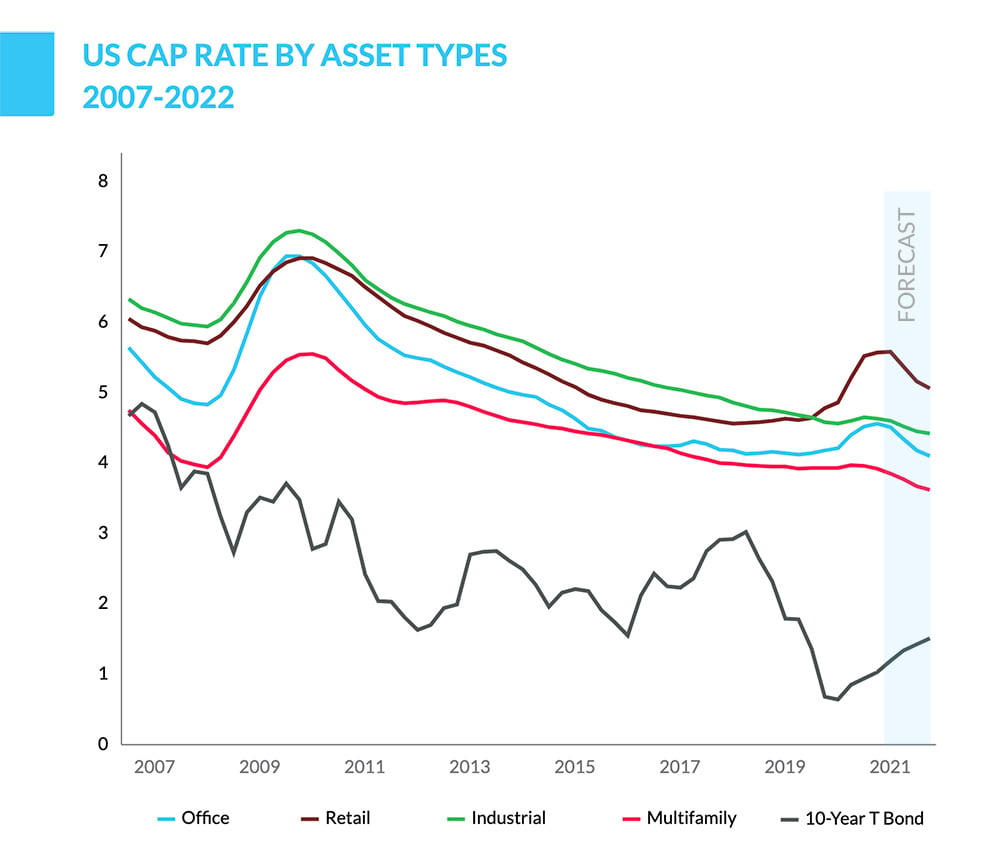Investor Resources
Cap Rates – The Misunderstood Valuation Metric

I was recently talking with a few potential investors about three different investment properties. In each situation, the first question they asked me was, “What was the cap rate?” Although many may think this is a natural question when evaluating a real estate investment, it made me wonder if they knew what data should be used to calculate a cap rate? What information is conspicuously missing from its calculation? What its limitations are? And, finally, why determining the cap rate is only one component in the overall valuation process?
This led me to realize that the cap rate is probably the most misunderstood analysis in evaluating real estate investments and should be explored and explained in more detail.
Cap Rate Calculation – Which NOI Should Be Used?
Let’s start with a basic definition. A cap is defined as the property’s Net Operating Income (NOI) divided its Price or Value. Seems simple enough – right? But here’s the first quagmire that needs to be considered. Which NOI should you use? Most investors would answer the property’s pro-forma or upcoming 12 month period. But what if the property has an abnormally low income for the next 12 months due to lease rollovers or vacancy. Ultimately, the NOI will be significantly influenced by the assumptions made related to these spaces. More importantly, these assumptions haven’t been realized yet.
A few other investors would then say – use the trailing NOI, or the previous 12 months. After all, those numbers are real and are not based on too conservative or too rosy assumptions. There’s some logic to this argument. But that approach also misses annual rental increases that are often present in multi-year leases.
A third answer could be to utilize a stabilized NOI. This would calculate the NOI at a market level occupancy, which would typically range from 92 – 95%, and removes the vacancy fluctuations that could highly influence the NOI in a specific year.
What’s Missing From The Cap Rate Calculation?
Another shortcoming of the cap rate is that it only looks at one specific year. Investors generally want to experience growth in the NOI over time. This is how value is created. If a property’s value is only determined by looking at one specific year, then the growth – or value creation component – is lost.
The cap rate also misses everything in a financial statement that is reflected below the NOI line. In a typical real estate property financial statement, amounts incurred for debt service, tenant improvements, leasing commissions, and other capital expenditures (base building) are all reflected below NOI. As a result, they are not reflected in a cap rate calculation, but they can ultimately have a significant impact on an investor’s overall return. For example, suppose you were considering an investment in a 5,000 sf single tenant net leased (STNL) property leased to Walgreens for the next seven years which was selling for a 6% cap rate. On the surface, this might sound attractive to some investors. However, what is not being reflected in the cap rate are the potential vacancy and tenant improvement costs should Walgreens vacate in seven years.
What’s also missing from the cap rate is the potential gain from the property’s appreciated value. All investors anticipate that when they decide to sell, the property will be worth more than the amount they initially paid. This is not reflected at all in the cap rate calculation.
Does The Cap Rate Reflect The Appropriate Level of Risk?
A cap rate should also reflect the risks associated with any real estate investment. Since any real estate investment carries some level of risk, its returns should be greater than the US 10-year treasury bill rate, which is considered a “risk free” investment. The difference between the 10 year T bill return and a real estate investment return is considered the “risk spread.” The graph below depicts the spread between retail, office, multifamily, and warehouse properties, and the 10 year T bill since 2007.

Source: CBRE
Over the past 13 years, the risk spread has ranged from approximately 3.5% (multifamily) to 7.25% (industrial).
Some investors may wonder why the spread would vary between different property types. One reason this occurs is because investors perceive multi-family properties as a necessity. Everyone needs a place to live. Additionally, the risks associated with one or two multi-family residents who can’t pay their rent is much less impactful to the overall cash flow than it would be if one or two commercial tenants couldn’t pay their rent in an office property. The chart below compares the spread for office and multi-family properties.
Spread between Cap Rates for Office and Multi-family Properties and 10-year Treasury Bill
| 2016 | 2017 | 2018 | 2019 | 2020 | |
|---|---|---|---|---|---|
| Office | 4.27% | 4.32% | 4.14% | 4.13% | 4.41% |
| Multi-family | 4.29% | 4.10% | 3.98% | 3.93% | 3.98% |
Source: CBRE
Geography can also influence the risk spread. Most investors consider properties in certain geographic regions to be safer than others. For example, many investors feel that investing in a property in New York or Los Angeles is safer than one in Tulsa or Des Moines because the economies in New York or Los Angeles are deeper and more diverse. This belief translates into a lower risk perception. So, the cap rate for a property in New York might be 100 to 200 basis points lower when compared to a similar building in Des Moines.
Comparing Dissimilar Investment Opportunities
Another limitation of a cap rate analysis is that an investor can’t easily compare dissimilar investment opportunities to determine the best decision. Suppose an investor were presented with the following options:
- Invest in a suburban Denver office building being purchased for an 8% cap rate.
- Invest in a Miami warehouse being purchased for a 6% cap rate.
- Invest in an Albuquerque multifamily property being purchased for a 5% cap rate.
Which option would you choose? Would you pick the highest cap rate property? Does a 2% spread fairly represent the greater risks associated with a suburban Denver office property versus a warehouse in Miami?
The answer is not easy because the cap rate calculation doesn’t provide sufficient information. In this regard, it is one-dimensional. Most investors want as much information as possible. They want to be sure that fluctuations in rent, vacancy, and all expenses – including tenant improvements, leasing commissions, and capital expenditures are accounted for in their analysis. They want to understand that opportunities and risks associated with an investment are reasonably considered and that if they are comparing multiple investment opportunities, they can ultimately determine which investment is the best decision.
Other Investment Metrics To Consider
A cap rate shouldn’t be dismissed entirely from an investors arsenal of methods to evaluate a property. It can provide some basic useful information when its limitations are understood. When used in conjunction with other valuation methods, such as Internal Rate of Return (IRR), replacement costs, historical price per square foot, and a sensitivity analysis, then the best decision can be determined.
In our next article, we will examine another investment metric that investors should utilize – the Internal Rate of Return (IRR).
Want to know more? Follow Kenwood Management on LinkedIn.
